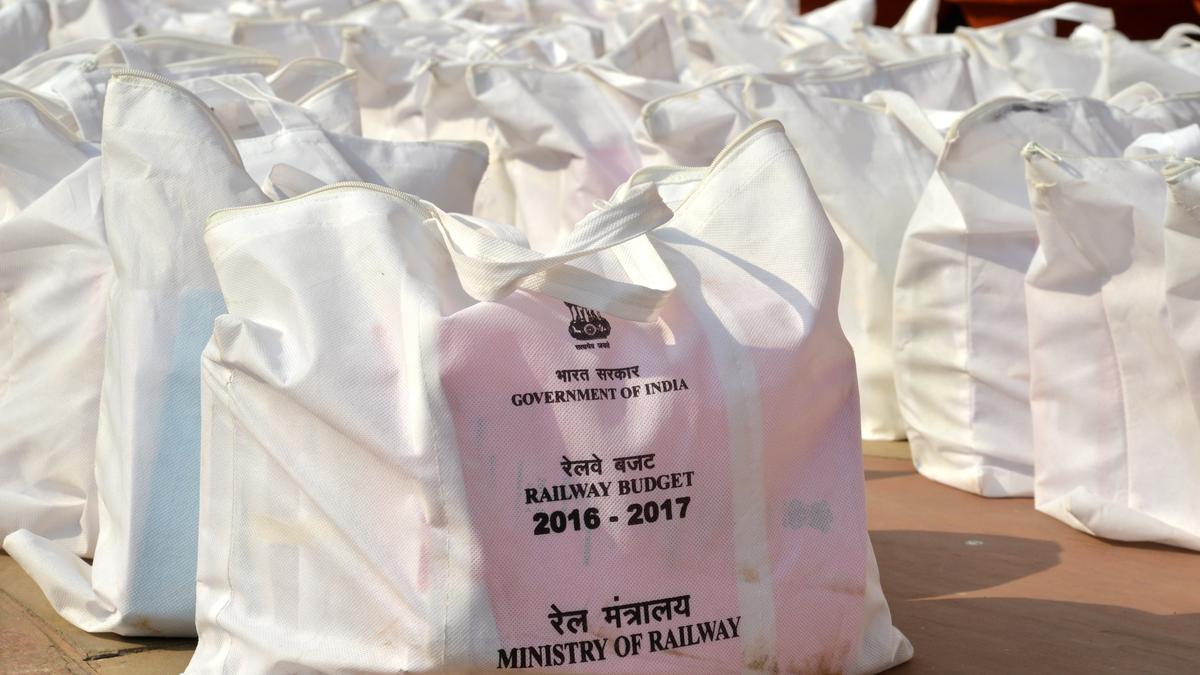Bags containing the Railway Budget papers are seen outside Parliament House on February 25, 2016. The 92-year-old practice of presenting the railway expenses, separate from those of the rest of the various arms of the government, was discontinued in 2017.
| Photo Credit: The Hindu
In India’s media timeline, one of the main annual highlights has generally been covering the Budget session of Parliament. As a reporter based in New Delhi between 2010 and 2013, my primary beat while working for a TV news channel was covering the Supreme Court. Almost as default, most beat reporters from “the south”, as we were all referred to, were given a secondary beat, which was to cover the representatives of southern India’s political parties in New Delhi. Today, it is more common to see New Delhi-based journalists from the south do a lot more than just cover the southern region of the country.
What was most anticipated back then was perhaps the Railways Budget, which was presented by the Union Railways Minister. People would eagerly wait to see whether fares would be reduced and new trains introduced. The Railways Budget was presented a few days before what was popularly referred to as the General Budget until 2017, when the 92-year-old practice of presenting the railway expenses of the following fiscal year, separate from those of the rest of the various arms of the government, was discontinued.
I remember covering the presentation of the Railways Budget in March 2012, when Trinamool Congress leader Dinesh Trivedi was the Union Railways Minister. Trinamool party chief Mamata Banerjee, who held the portfolio until a year earlier, had won a historic mandate in West Bengal in 2011 and had returned to Kolkata to form the first non-Left government in over three decades. There was speculation for weeks about whether rail fares would be raised as Ms. Banerjee had held them down for three years, despite the larger alliance partner, the Congress, and Prime Minister Manmohan Singh himself suggesting pragmatism over populism.
The very marginal raise in fares was given wall-to-wall coverage. On a rain-soaked day, Mr. Trivedi had to face a volley of questions from the media on the lawns outside old Parliament House. Mr. Trivedi appeared defensive, and almost helpless. Within minutes of the Railways Budget being tabled, Ms. Banerjee had threatened to withdraw support to the United Progressive Alliance into the middle of its second term in office if the hikes were not halted, and indicated that she wished to replace her Cabinet-ranked colleague, who was considered her trusted lieutenant.
Speculations were rife on who would replace Mr. Trivedi. I remember being rather direct, and almost ruthless in hindsight, with my questions on who his replacement would be, even before Mr. Trivedi could explain why the passenger fares had been hiked. By then, politics had taken over, and whether the proposed hike would be shelved or not had taken a backseat. Sure enough, in four days, the Trinamool’s Mukul Roy replaced Mr. Trivedi as Railways Minister.
What struck me while covering the latest Budget was how the Railways have been relegated to the background. Today, the media reports the sudden hikes in fares, but few political parties seem to scrutinise the fares or question the increases, which pinch the pockets of the middle class and poor. There also seems little likelihood of the Railways Minister being replaced or stepping down, as Lal Bahadur Shastri did after the 1956 Ariyalur train accident, owning “moral responsibility”, despite train derailments and tragedies, let alone hikes in fares.
While the excitement around the Budget remains as it did back in the day, what has strikingly changed within the media itself is the sheer number of platforms that journalists report on, which has made the coverage more breathless and challenging. Print journalists also do video interviews and podcasts now.
There is also a lack of greater interactions with Ministers and bureaucrats, who prefer to make announcements through their social media handles. This has reduced media scrutiny to an extent. While press conferences are still held, jazzy power point presentations and “key highlight” documents are prioritised over answering journalist questions.
kunal.shankar@thehindu.co.in

